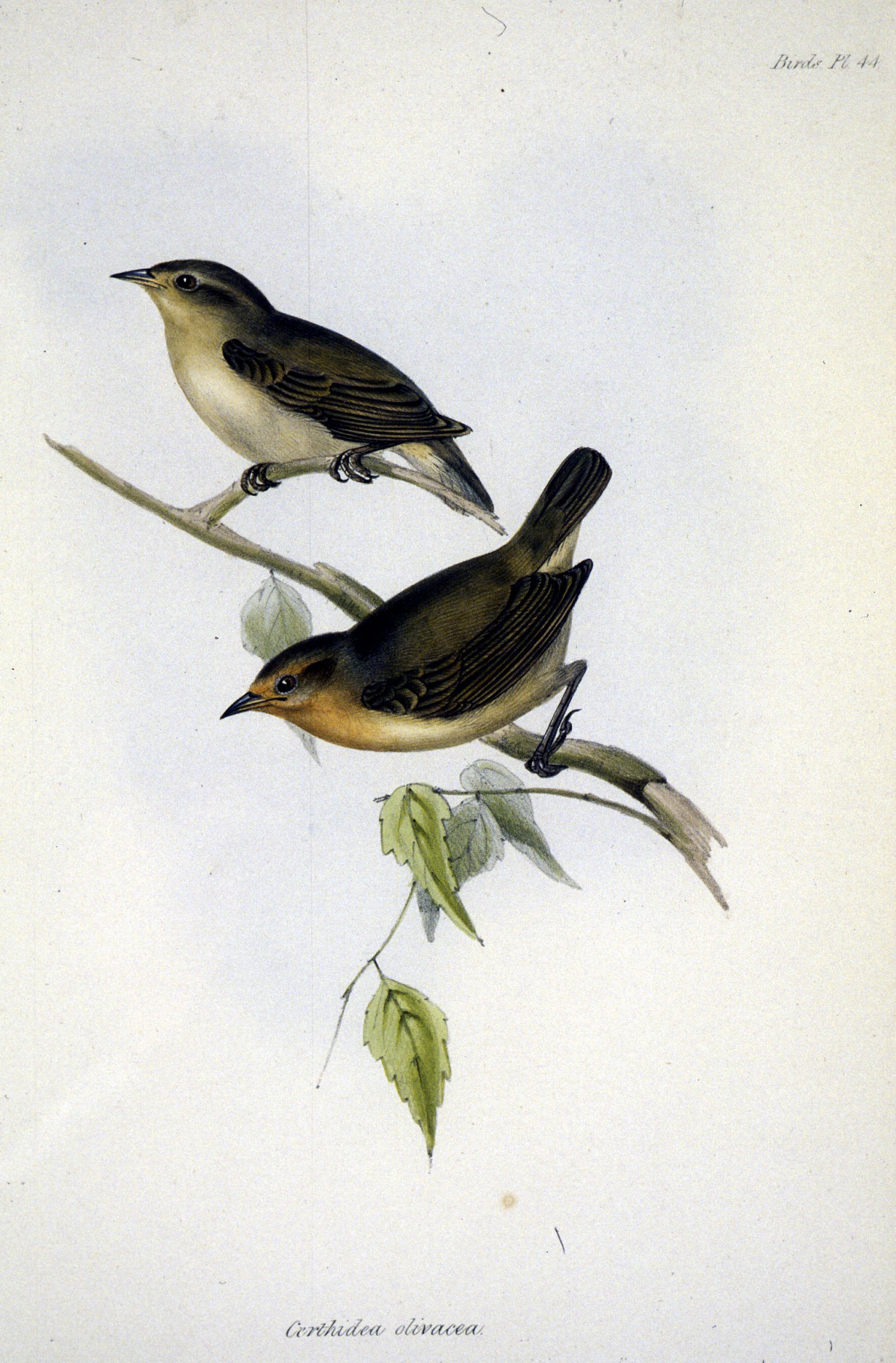John Gould and his contribution to science
On this page...

© Research Library
Gould the naturalist
For a man with no formal scientific training, John Gould made a remarkable name for himself as one of the great naturalist figures of the nineteenth century. Gould's two great contributions to science were taxonomically describing Charles Darwin's Galapagos finches and his descriptions of Australian fauna.
John Gould was a fellow of many scientific societies including the Zoological, Linnean and Royal Societies. In his lifetime, he wrote over 300 scientific articles and identified 377 new species of birds. He was able to recognise specimens that represented different and undescribed taxa, without creating many unjustified names for species with minor variations. Consequently, many of his names have stood the test of time and are still valid.

Splendid grass parakeet (Euphema splendida). This specimen was illustrated by Gould and then later sold to the Academy of Natural Sciences, Philadelphia.
Image: -© Australian Museum
Australian birds and mammals first described by John Gould
Of all his achievements, John Gould is most well known for his influence on Australian ornithology. While his work The Birds of Australia is primarily remembered for its impressive illustrations, its publication also made him the dominant figure in Australian taxonomy. Of the approximately 830 species of birds that live in Australia, John Gould is credited with describing between 300 and 328 of them.
'Then came the important Gould era. From 1837, when he produced his first work on Australian birds, to the day of his death in 1881, Australian ornithology was dominated by John Gould; it may be said that practically every new Australian bird discovered during this period passed, in some way, through his hands.' Hubert Massey Whittell, 1954
Gould was also a significant figure in Australian mammalogy. In addition to his work on ornithology, Gould also produced A Monograph of the Macropodidae or Family of Kangaroos (2 parts, 30 plates 1841 - 42) and The Mammals of Australia (3 volumes, 182 plates 1845 - 63). He wrote, in explanation of this departure from birds:
It was not, however, until I arrived in the country, and found myself surrounded by objects as strange as if I had been transported to another planet, that I conceived the idea of devoting a portion of my attention to the mammalian class of its extraordinary fauna. John Gould, in the preface to The Mammals of Australia, volume 1 (1863)
He is credited with describing 45 species of Australian mammals.
Gould and Darwin - the Galapagos finches
On 4 January 1837, Charles Darwin presented 'A magnificent collection of Mammalia and Birds' to the Museum of the Zoological Society. The gift consisted of 450 birds and 80 mammals.
Gould was asked to classify the bird specimens. A number of specimens from the Galapagos Archipelago caused him great excitement. There were a number of ordinary looking brown finches distinguishable by their differing beak sizes. Gould identified 13 new finch species (now reduced to nine) by this morphological difference. Today these unique finches are known as 'Darwin's finches' or 'Galapagos finches'.
Gould's identification of these bird species played an important part for Darwin when he was formulating his theory of evolution. It was the realisation that the separate species on the different islands of the Galapagos were closely related to species on the South American mainland, combined with fossil evidence, that led Darwin to recognise that populations of similar species that are isolated from each other may continue to evolve separately.
Interestingly, despite playing a major role in proving Darwin's theory of island speciation, Gould was not a vocal supporter of Darwin's evolutionary theory and downplayed his connection with it. Many of Gould's subscribers were conservative aristocrats and members of the establishment who disavowed Darwin's new and controversial theories; Gould likely did not want to lose their patronage.

Warbler Finch, Certhidea olivacea
Image: -© Australian Museum







